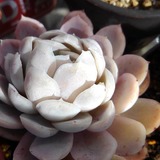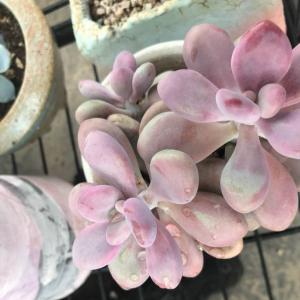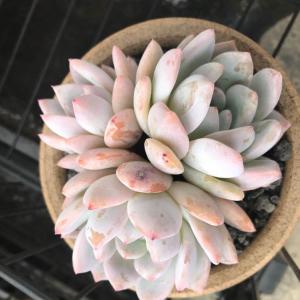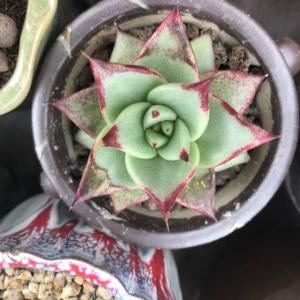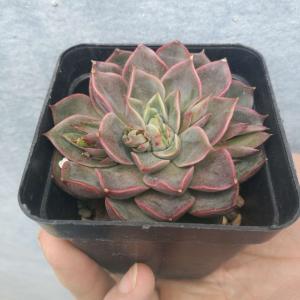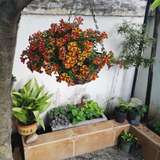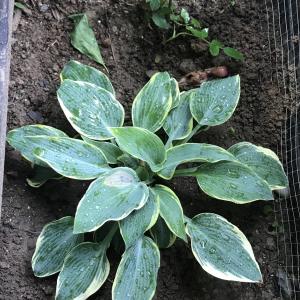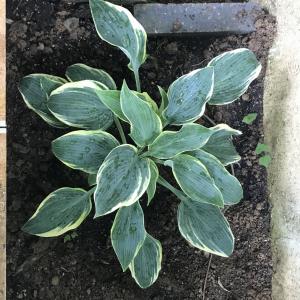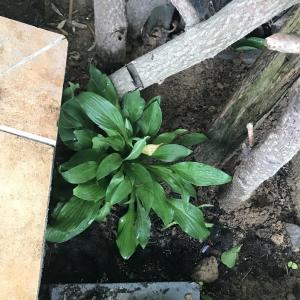文章
Miss Chen
2018年05月28日

Description: This herbaceous plant is about 1½–4½' tall, branching occasionally. It is a biennial or short-lived perennial. The erect to ascending stems are light green to dull reddish brown, terete, and densely covered with long hairs. The alternate or opposite leaves are up to 12" long and 8" across, becoming gradually smaller as they ascend the stems. They have pubescent petioles up to 4" long that are grooved above and convex below. The lower to middle leaves are pinnately lobed and somewhat dentate or undulate along their margins; they usually have 5-7 major lobes with pointed tips. The upper leaves have pairs of basal lobes or they lack lobes; they are ovate, broadly hastate, or sometimes another shape.
The upper leaf surface is dull medium green; it is usually hairless for older leaves and appressed-hairy for younger leaves. The lower leaf surface is pale green and pubescent primarily along the major veins. At the bases of petioles, there are pairs of large green stipules. These stipules are connate (merged together) and their margins are coarsely dentate. Small cymes of several flowerheads develop from the upper stems and the axils of upper leaves. The branches of these cymes are green and pubescent. Sometimes there are 1-2 small linear bracts where the branches diverge, and sometimes they are found underneath the flowerheads. These bracts are green, pubescent, and about 8 mm. (1/3") in length. Each flowerhead is about ½" across, consisting of several disk florets in the center and 5-8 ray florets around its circumference.

The small disk florets have cream-colored tubular corollas with 5 lobes; they are staminate. The petaloid rays of the flowerheads are white, obovate, short, and 3-lobed; sometimes they are absent. Only the ray florets produce achenes. Surrounding the base of each flowerhead, there are 5 floral bracts (phyllaries) that are light green, pubescent, and lanceolate in shape; they become recurved when the flowerheads bloom. The blooming period occurs from mid-summer into the fall, lasting about 2 months. Only a few flowerheads are in bloom at the same time. Somewhat later, the flowerheads turn brown and their ray florets are replaced by obovoid achenes that are 3-angled, dark brown, and 3-4 mm. in length. These achenes lack tufts of hair. The root system is fibrous, although a poorly developed taproot is sometimes present.

Cultivation: This species is typically found in light to medium shade, moist to slightly dry conditions, and loamy to slightly rocky soil with abundant organic matter. The size of individual plants is variable, depending on moisture conditions and soil fertility. In the flower garden, this species may be short-lived.
Range & Habitat: Leaf-Cup (Polymnia canadensis) is uncommon to occasional throughout Illinois (see Distribution Map), where it is native. Habitats include rich deciduous woodlands, upland rocky woodlands, bases of bluffs, shaded moist ravines, wooded slopes, shaded areas along streams, and edges of limestone or sandstone glades. This wildflower is associated with oak-hickory, maple-linden, and maple-beech woodlands; it is usually found in higher quality woodlands where the original ground flora is still intact.

Faunal Associations: The nectar and pollen of the flowerheads attract honeybees, bumblebees, and miscellaneous flies (Sharp, 2002). Small bees probably visit the flowerheads in some areas as well. Ants feed on nectar from the disk florets of the flowerheads, but they are ineffective at cross-pollination (personal observation). Other insects suck plant juices or feed on the leaves of Leaf-Cup (Polymnia canadensis). These species include several plant bugs (Macrolophus spp., Dicyphus gracilentus, Plagiognathus albifascies), the aphids Uroleucon zinzalae and Capitophorus hippophaes, and the leaf beetle Sumitrosis inaequalis. The larvae of this latter species are leaf-miners. Several species in the Orthoptera feed destructively on the flowerheads (Gangwere, 1961); they include Neoxabea bipunctata (Two-spotted Tree Cricket), Oecanthus niveus (Narrow-winged Tree Cricket), Scudderia furcata (Fork-tailed Bush Katydid), and Anaxipha exigua (Say's Trig). The relationships of Leaf-Cup to vertebrate animals is currently unavailable.

Photographic Location: A deciduous woodland at the Portland Arch Conservation Area in west-central Indiana.
Comments: This woodland wildflower is a medium-large leafy plant. However, Leaf-Cup isn't very well known among members of the public because its small flowerheads are not very showy. These flowerheads are somewhat similar in appearance to those of a weedy introduced plant, Galinsoga quadriradiata (Peruvian Daisy). However, this latter species is a much smaller plant of open areas. The closest relative of Leaf-Cup is Smallanthus uvedalius (Bear's Foot), which has larger yellow flowerheads and palmately lobed leaves. This latter species can become up to 8' tall. In Illinois, it is restricted to the southern part of the state.
The upper leaf surface is dull medium green; it is usually hairless for older leaves and appressed-hairy for younger leaves. The lower leaf surface is pale green and pubescent primarily along the major veins. At the bases of petioles, there are pairs of large green stipules. These stipules are connate (merged together) and their margins are coarsely dentate. Small cymes of several flowerheads develop from the upper stems and the axils of upper leaves. The branches of these cymes are green and pubescent. Sometimes there are 1-2 small linear bracts where the branches diverge, and sometimes they are found underneath the flowerheads. These bracts are green, pubescent, and about 8 mm. (1/3") in length. Each flowerhead is about ½" across, consisting of several disk florets in the center and 5-8 ray florets around its circumference.

The small disk florets have cream-colored tubular corollas with 5 lobes; they are staminate. The petaloid rays of the flowerheads are white, obovate, short, and 3-lobed; sometimes they are absent. Only the ray florets produce achenes. Surrounding the base of each flowerhead, there are 5 floral bracts (phyllaries) that are light green, pubescent, and lanceolate in shape; they become recurved when the flowerheads bloom. The blooming period occurs from mid-summer into the fall, lasting about 2 months. Only a few flowerheads are in bloom at the same time. Somewhat later, the flowerheads turn brown and their ray florets are replaced by obovoid achenes that are 3-angled, dark brown, and 3-4 mm. in length. These achenes lack tufts of hair. The root system is fibrous, although a poorly developed taproot is sometimes present.

Cultivation: This species is typically found in light to medium shade, moist to slightly dry conditions, and loamy to slightly rocky soil with abundant organic matter. The size of individual plants is variable, depending on moisture conditions and soil fertility. In the flower garden, this species may be short-lived.
Range & Habitat: Leaf-Cup (Polymnia canadensis) is uncommon to occasional throughout Illinois (see Distribution Map), where it is native. Habitats include rich deciduous woodlands, upland rocky woodlands, bases of bluffs, shaded moist ravines, wooded slopes, shaded areas along streams, and edges of limestone or sandstone glades. This wildflower is associated with oak-hickory, maple-linden, and maple-beech woodlands; it is usually found in higher quality woodlands where the original ground flora is still intact.

Faunal Associations: The nectar and pollen of the flowerheads attract honeybees, bumblebees, and miscellaneous flies (Sharp, 2002). Small bees probably visit the flowerheads in some areas as well. Ants feed on nectar from the disk florets of the flowerheads, but they are ineffective at cross-pollination (personal observation). Other insects suck plant juices or feed on the leaves of Leaf-Cup (Polymnia canadensis). These species include several plant bugs (Macrolophus spp., Dicyphus gracilentus, Plagiognathus albifascies), the aphids Uroleucon zinzalae and Capitophorus hippophaes, and the leaf beetle Sumitrosis inaequalis. The larvae of this latter species are leaf-miners. Several species in the Orthoptera feed destructively on the flowerheads (Gangwere, 1961); they include Neoxabea bipunctata (Two-spotted Tree Cricket), Oecanthus niveus (Narrow-winged Tree Cricket), Scudderia furcata (Fork-tailed Bush Katydid), and Anaxipha exigua (Say's Trig). The relationships of Leaf-Cup to vertebrate animals is currently unavailable.

Photographic Location: A deciduous woodland at the Portland Arch Conservation Area in west-central Indiana.
Comments: This woodland wildflower is a medium-large leafy plant. However, Leaf-Cup isn't very well known among members of the public because its small flowerheads are not very showy. These flowerheads are somewhat similar in appearance to those of a weedy introduced plant, Galinsoga quadriradiata (Peruvian Daisy). However, this latter species is a much smaller plant of open areas. The closest relative of Leaf-Cup is Smallanthus uvedalius (Bear's Foot), which has larger yellow flowerheads and palmately lobed leaves. This latter species can become up to 8' tall. In Illinois, it is restricted to the southern part of the state.
0
0
文章
Miss Chen
2018年05月24日

Description: This herbaceous perennial plant is about 1¼-3' tall and usually unbranched, except toward the apex where the flowers occur. The central stem is light green, terete, and glabrous to slightly hairy. The alternate leaves are up to 4" long and 1¾" across, becoming gradually smaller as they ascend the stems. They are lanceolate to ovate, serrated along their margins, and pinnately veined. The upper leaf surface is medium green and glabrous to sparsely short-pubescent, while the lower surface is light green and mostly glabrous, except for some hairs along the major veins. The bases of lower leaves taper into short winged petioles, while the bases of upper leaves are sessile. The tips of leaves are mostly acute (less often bluntly acute). The central stem terminates in a panicle of flowerheads up to 1' tall and 1' across. The major branches of this panicle are arching, widely spreading, and racemose (raceme-like in appearance). The flowerheads are borne on short lateral branchlets along the major branches, facing upward; they are nearly sessile. Both the branches and branchlets are light to medium green and pubescent. The panicle is rather open in structure and it often causes the entire plant to lean over because of the weight of the flowerheads.
Each flowerhead is about 3 mm. (1/8") across, consisting of several ray florets (3-8) that surround a similar number of disk florets. Both the petaloid rays and corollas of the florets are yellow; the petaloid rays are linear-oblong, while the corollas are short-tubular and minutely lobed above. Surrounding the base of each flowerhead, there are several overlapping series of phyllaries (scaly floral bracts); these phyllaries are light green to yellowish green, appressed together, and linear-lanceolate in shape. In addition to the flowerheads, small leafy bracts (up to 1" long) occur along the branches and branchlets of the panicle. On robust plants, smaller secondary panicles or racemes of flowerheads often develop from the axils of upper leaves. The blooming period occurs from late summer to early fall and lasts about 3-4 weeks. Afterwards, fertile florets are replaced by small achenes with tufts of hair at their apices. These achenes are oblongoid in shape and 2-3 mm. long; they are dispersed by the wind. The root system consists of a branching caudex with secondary fibrous roots; rhizomes are also produced, enabling this plant to form clonal colonies.

Cultivation: The preference is light shade to partial sun, moist to slightly dry conditions, and soil containing loam, sandy loam, glacial till, or some rocky material. This goldenrod readily adapts to cultivation and it should be planted in gardens more often.
Range & Habitat: The native Elm-Leaved Goldenrod is a common plant that has been observed in nearly all counties of Illinois (see Distribution Map). Among woodland goldenrods (Solidago spp.), it is the most common species in the state. Habitats include mesic to upland woodlands, woodland edges, thinly wooded bluffs, edges of limestone glades, partially shaded banks of rivers, and thickets. This goldenrod can spread to edges of lawns in semi-shaded areas from adjacent woodlands. It is found in both higher quality and degraded habitats. Wildfires and other kinds of disturbance are beneficial if they reduce excessive shade from overhead canopy trees and competing shrubs.

Faunal Associations: The flowers attract various kinds of bees, wasps, and flies. These insects seek nectar; bees also collect pollen. Among the bees, are such floral visitors as miner bees (Melissodes spp.), Halictid bees, masked bees (Hylaeus spp.), plasterer bees (Colletes spp.), Andrenid bees, dagger bees (Panurginae), and leaf-Cutting bees (Megachile spp.). Many insects feed destructively on Elm-Leaved Goldenrod and other goldenrods (Solidago spp.); this includes Sumitrosis inaequalis and other leaf beetles, the Goldenrod Plant Bug (Lopidea media) and other plant bugs, the Green Stink Bug (Acrosternum hilaris) and other stink bugs, the Goldenrod Lace Bug (Corythucha marmorata), Acuticauda solidaginifoliae and other aphids, various leafhoppers and treehoppers, and caterpillars of the Goldenrod Flower Moth (Schinia nundina) and many other moths (see the Moth Table). Some vertebrate animals also feed on goldenrods. For example, the Ruffed Grouse, Cottontail Rabbit, and White-Tailed Deer browse on the foliage occasionally, while such granivorous songbirds as the Eastern Goldfinch, Slate-Colored Junco, and Tree Sparrow eat the seeds during the autumn and winter.

Photographic Location: At the edge of a wooded area in Crystal Lake Park, Urbana, Illinois.
Comments: This woodland goldenrod has a terminal inflorescence that is rather lanky and spreading, while its lower leaves are lanceolate-ovate and coarsely serrated (superficially resembling the leaves of American Elm, but more narrow and thin-textured). Elm-Leaved Goldenrod is similar in appearance to Canada Goldenrod (Solidago canadensis), but the latter has lower leaves with 3 parallel veins (a central vein and two lateral veins). Canada Goldenrod also has more hairy leaves and stems, and the major branches of its panicles are usually less divergent than those of Elm-Leaved Goldenrod. Other goldenrods (Solidago spp.) can be distinguished by some combination of characteristics involving the appearance of their leaves, stems, or inflorescences. Because there are many goldenrod species in Illinois, they can be difficult to distinguish.
Each flowerhead is about 3 mm. (1/8") across, consisting of several ray florets (3-8) that surround a similar number of disk florets. Both the petaloid rays and corollas of the florets are yellow; the petaloid rays are linear-oblong, while the corollas are short-tubular and minutely lobed above. Surrounding the base of each flowerhead, there are several overlapping series of phyllaries (scaly floral bracts); these phyllaries are light green to yellowish green, appressed together, and linear-lanceolate in shape. In addition to the flowerheads, small leafy bracts (up to 1" long) occur along the branches and branchlets of the panicle. On robust plants, smaller secondary panicles or racemes of flowerheads often develop from the axils of upper leaves. The blooming period occurs from late summer to early fall and lasts about 3-4 weeks. Afterwards, fertile florets are replaced by small achenes with tufts of hair at their apices. These achenes are oblongoid in shape and 2-3 mm. long; they are dispersed by the wind. The root system consists of a branching caudex with secondary fibrous roots; rhizomes are also produced, enabling this plant to form clonal colonies.

Cultivation: The preference is light shade to partial sun, moist to slightly dry conditions, and soil containing loam, sandy loam, glacial till, or some rocky material. This goldenrod readily adapts to cultivation and it should be planted in gardens more often.
Range & Habitat: The native Elm-Leaved Goldenrod is a common plant that has been observed in nearly all counties of Illinois (see Distribution Map). Among woodland goldenrods (Solidago spp.), it is the most common species in the state. Habitats include mesic to upland woodlands, woodland edges, thinly wooded bluffs, edges of limestone glades, partially shaded banks of rivers, and thickets. This goldenrod can spread to edges of lawns in semi-shaded areas from adjacent woodlands. It is found in both higher quality and degraded habitats. Wildfires and other kinds of disturbance are beneficial if they reduce excessive shade from overhead canopy trees and competing shrubs.

Faunal Associations: The flowers attract various kinds of bees, wasps, and flies. These insects seek nectar; bees also collect pollen. Among the bees, are such floral visitors as miner bees (Melissodes spp.), Halictid bees, masked bees (Hylaeus spp.), plasterer bees (Colletes spp.), Andrenid bees, dagger bees (Panurginae), and leaf-Cutting bees (Megachile spp.). Many insects feed destructively on Elm-Leaved Goldenrod and other goldenrods (Solidago spp.); this includes Sumitrosis inaequalis and other leaf beetles, the Goldenrod Plant Bug (Lopidea media) and other plant bugs, the Green Stink Bug (Acrosternum hilaris) and other stink bugs, the Goldenrod Lace Bug (Corythucha marmorata), Acuticauda solidaginifoliae and other aphids, various leafhoppers and treehoppers, and caterpillars of the Goldenrod Flower Moth (Schinia nundina) and many other moths (see the Moth Table). Some vertebrate animals also feed on goldenrods. For example, the Ruffed Grouse, Cottontail Rabbit, and White-Tailed Deer browse on the foliage occasionally, while such granivorous songbirds as the Eastern Goldfinch, Slate-Colored Junco, and Tree Sparrow eat the seeds during the autumn and winter.

Photographic Location: At the edge of a wooded area in Crystal Lake Park, Urbana, Illinois.
Comments: This woodland goldenrod has a terminal inflorescence that is rather lanky and spreading, while its lower leaves are lanceolate-ovate and coarsely serrated (superficially resembling the leaves of American Elm, but more narrow and thin-textured). Elm-Leaved Goldenrod is similar in appearance to Canada Goldenrod (Solidago canadensis), but the latter has lower leaves with 3 parallel veins (a central vein and two lateral veins). Canada Goldenrod also has more hairy leaves and stems, and the major branches of its panicles are usually less divergent than those of Elm-Leaved Goldenrod. Other goldenrods (Solidago spp.) can be distinguished by some combination of characteristics involving the appearance of their leaves, stems, or inflorescences. Because there are many goldenrod species in Illinois, they can be difficult to distinguish.
0
0
文章
Miss Chen
2018年05月24日

Description: This perennial wildflower is 2-3' tall and usually unbranched. The central stem is light green, terete or angular, and glabrous to hairy; it has a tendency to zigzag between the alternate leaves. The leaf blades are 2-5" long and 1-4" across, becoming shorter and more narrow where the flowers occur; they areFlowering Plant widely spreading. The lower to middle leaves are ovate to broadly ovate, while the upper leaves are more lanceolate. The leaf margins are coarsely serrated. The upper surfaces of the leaves are medium to dark green and glabrous, while their lowers surfaces are more pale and glabrous to slightly hairy. The petioles are ¼–1½" long and somewhat winged near the bases of the leaf blades. At the apex of the central stem, there is a terminal inflorescence about 1½–5" long and about one-third as much across. This inflorescence is either a raceme or narrow panicle of flowerheads. There are also smaller axillary racemes about ½–1½" long that develop from the middle to upper leaves; they are shorter than the leaves. The branches of each inflorescence are light green and glabrous. Each flowerhead is about ¼" across or a little less, consisting of 3-4 yellow ray florets, 4-8 yellow disk florets, and several series of floral bracts at its base. The floral bracts are light green and appressed. The blooming period occurs from late summer to early fall and lasts about 1 month. Both ray and disk florets are fertile. During the fall, the florets are replaced by achenes with small tufts of hair; they are distributed by the wind. The small achenes are bullet-shaped and pubescent. The root system is fibrous and rhizomatous. Vegetative colonies of plants are sometimes formed from the spreading rhizomes.
Cultivation: The preference is light to medium shade, moist to dry-mesic conditions in sheltered situations, and fertile loamy soil with decaying organic matter. This is one of the most shade-tolerant goldenrods.
Range & Habitat: The native Zigzag Goldenrod is occasional in central and northern Illinois, becoming uncommon or absent in the southern section of the state (see Distribution Map). Habitats include rich deciduous woodlands, protected wooded slopes facing north or east, calcareous seeps in wooded areas, low areas along woodland streams, shaded limestone cliffs, and edges of limestone glades. This wildflower is usually found in higher quality natural areas.
Faunal Associations: The flowerheads are pollinated by many kinds of insects, including long-tongued bees, small-tongued bees, wasps, flies, and butterflies. Several bees are oligoleges of Solidago spp. (Goldenrods). These species include: Andrena hirticincta, Andrena nubecula, Andrena placata, Andrena simplex, Andrena solidaginis, and Colletes simulans armata. Many insects feed on the leaves, flowers, seeds, and roots of goldenrods. These insect feeders include plant bugs, stink bugs, aphids, leaf beetles, and the caterpillars of many moths (see the Moth Table and the Insect Table for a listing of these species). These insects are a source of food to many woodland songbirds and some upland gamebirds. White-tailed Deer readily browse on the foliage of Zigzag Goldenrod.

Photographic Location: A wooded slope at Turkey Run State Park in west-central Indiana.
Comments: Zigzag Goldenrod is a member of a small group of woodland goldenrods (Solidago spp.); other species in this group include Solidago caesia (Bluestem Goldenrod) and Solidago ulmifolia (Elm-Leaved Goldenrod). Zigzag Goldenrod often occurs more moist habitats than the latter two goldenrods, but it also occurs in drier areas of woodlands that are sheltered from the prevailing winds and afternoon sunlight. Because of its broad coarsely toothed leaves and axillary racemes of flowerheads, it is one of the easiest goldenrods to identify. Another common name of this species is Broad-Leaved Goldenrod.
Cultivation: The preference is light to medium shade, moist to dry-mesic conditions in sheltered situations, and fertile loamy soil with decaying organic matter. This is one of the most shade-tolerant goldenrods.
Range & Habitat: The native Zigzag Goldenrod is occasional in central and northern Illinois, becoming uncommon or absent in the southern section of the state (see Distribution Map). Habitats include rich deciduous woodlands, protected wooded slopes facing north or east, calcareous seeps in wooded areas, low areas along woodland streams, shaded limestone cliffs, and edges of limestone glades. This wildflower is usually found in higher quality natural areas.
Faunal Associations: The flowerheads are pollinated by many kinds of insects, including long-tongued bees, small-tongued bees, wasps, flies, and butterflies. Several bees are oligoleges of Solidago spp. (Goldenrods). These species include: Andrena hirticincta, Andrena nubecula, Andrena placata, Andrena simplex, Andrena solidaginis, and Colletes simulans armata. Many insects feed on the leaves, flowers, seeds, and roots of goldenrods. These insect feeders include plant bugs, stink bugs, aphids, leaf beetles, and the caterpillars of many moths (see the Moth Table and the Insect Table for a listing of these species). These insects are a source of food to many woodland songbirds and some upland gamebirds. White-tailed Deer readily browse on the foliage of Zigzag Goldenrod.

Photographic Location: A wooded slope at Turkey Run State Park in west-central Indiana.
Comments: Zigzag Goldenrod is a member of a small group of woodland goldenrods (Solidago spp.); other species in this group include Solidago caesia (Bluestem Goldenrod) and Solidago ulmifolia (Elm-Leaved Goldenrod). Zigzag Goldenrod often occurs more moist habitats than the latter two goldenrods, but it also occurs in drier areas of woodlands that are sheltered from the prevailing winds and afternoon sunlight. Because of its broad coarsely toothed leaves and axillary racemes of flowerheads, it is one of the easiest goldenrods to identify. Another common name of this species is Broad-Leaved Goldenrod.
0
0
文章
Miss Chen
2018年05月23日

Description: This perennial wildflower is ¾-3' tall and usually unbranched, except near the apex where the inflorescence occurs. Erect leafy stems may be produced individually or in small clusters. The central stem is is whitish green, 4-angled, and covered with either glandular or non-glandular hairs (or both). Pairs of opposite leaves occur along each stem. The leaf blades are 1-4" long and ¾-3" across; they are cordate in shape with coarse dentate-crenate margins. The upper blade surface is medium to dark green and either sparsely covered with short hairs or glabrous. The lower surface is slightly more pale and varies from densely hairy to sparsely hairy (rarely glabrous). The slender petioles are ½-2" long and hairy.
The central stem terminates in a raceme of flowers about 3-12" long. In addition, any upper lateral stems may produce smaller racemes of flowers. The racemes are narrow and usually only a few flowers are in bloom at the same time. Individual flowers are ½-1" long. Each flower consists of a blue-violet or purple corolla with 2 lips, a short tubular calyx with 2 lips, 4 inserted stamens, and a pistil with an inserted style. The corolla is much longer than the calyx. The corolla is narrow and tubular at its base, but becomes more wide and swollen towards its lips. The upper lip of the corolla consists of a protective hood, while the lower lip is larger, more rounded, and somewhat lobed. There is usually a large patch of white along the inside of the lower lip that is speckled blue-violet or purple. The calyx is about 1/8" (3 mm.) long, whitish green, and covered with glandular hairs. A protuberance occurs along the upper side of each calyx. The pedicels of theDistribution Map flowers are very short (about 1/8" or 3 mm. in length). Underneath the flowers, there are leafy bracts of variable length: on some plants, they extend as far as the tips of the calyces, but no further, while on other plants they extend beyond the tips of the calyces. These bracts are ovate in shape. The blooming period typically occurs from late spring to mid-summer, lasting about 1 month. However, if a stem is damaged, this may delay flowering until later in the year. Afterward, the flowers are replaced by small dark nutlets. The root system is fibrous and either rhizomatous or stoloniferous.
Cultivation: The preference is dappled sunlight to medium shade, mesic conditions, and soil that contains loam, some calcareous sand, or rocky material (typically limestone). This wildflower is a good choice for shade gardens.
Range & Habitat: The native Heart-Leaved Skullcap is occasional throughout Illinois. Habitats include upland woodlands that are often rocky, bottomland woodlands, bluffs, woodland openings, shaded areas along cliffs, edges of limestone glades, and thickets. This wildflower is usually found in higher quality woodlands where the original ground flora is still intact.
Faunal Associations: The flowers are cross-pollinated by long-tongued bees, particularly bumblebees and Anthophorine bees (Anthophora spp.), which suck nectar and collect pollen. Short-tongued bees and Syrphid flies may also visit the flowers, but they are too small to be effective pollinators. Swallowtail butterflies and other butterflies occasionally visit the flowers, but they are also less effective at cross-pollination according to Robertson (1929). A few species of insects feed on the leaves of Heart-Leaved Skullcap and other skullcaps (Scutellaria spp.). These species include the skeletonizing leaf beetle Phyllobrotica limbata, Asphaera lustrans (Shiny Flea Beetle), larvae of Prochoreutis inflatella (Skullcap Skeletonizer Moth), and larvae of the moth Caloptilia scutellariella. The larvae of this last species are both blotch leaf-miners and leaf-folders. Because of its bitter taste and possible toxicity, mammalian herbivores rarely feed on the foliage.
Photographic Location: A floodplain woodland in Lake County, Illinois. The photographed plants are either Scutellaria ovata ovata or Scutellaria ovata bracteata. The photographs (Copyright © 2011) were taken by Paul Showers.

Comments: Unlike many other Scutellaria spp., this skullcap has mostly heart-shaped leaves with indented bases; sometimes the uppermost leaves have bases that are rounded, rather than indented. Across its range, Heart-Leaved Skullcap is highly variable and several subspecies have been recognized. In Illinois, three of these subspecies can be found: Scutellaria ovata ovata, Scutellaria ovata bracteata, and Scutellaria ovata rugosa. The first two subspecies occur throughout Illinois and they are distinguished by the size of the leafy bracts on their racemes: Scutellaria ovata ovata has leafy bracts that extend no farther than the calyces of the flowers, while Scutellaria ovata bracteata has leafy bracts that extend beyond the calyces of the flowers. The third subspecies, Scutellaria ovata rugosa, is only found in southern Illinois. It can be distinguished from the preceding subspecies by its small size (less than 1' tall) and small leaves (less than 1½" long).
The central stem terminates in a raceme of flowers about 3-12" long. In addition, any upper lateral stems may produce smaller racemes of flowers. The racemes are narrow and usually only a few flowers are in bloom at the same time. Individual flowers are ½-1" long. Each flower consists of a blue-violet or purple corolla with 2 lips, a short tubular calyx with 2 lips, 4 inserted stamens, and a pistil with an inserted style. The corolla is much longer than the calyx. The corolla is narrow and tubular at its base, but becomes more wide and swollen towards its lips. The upper lip of the corolla consists of a protective hood, while the lower lip is larger, more rounded, and somewhat lobed. There is usually a large patch of white along the inside of the lower lip that is speckled blue-violet or purple. The calyx is about 1/8" (3 mm.) long, whitish green, and covered with glandular hairs. A protuberance occurs along the upper side of each calyx. The pedicels of theDistribution Map flowers are very short (about 1/8" or 3 mm. in length). Underneath the flowers, there are leafy bracts of variable length: on some plants, they extend as far as the tips of the calyces, but no further, while on other plants they extend beyond the tips of the calyces. These bracts are ovate in shape. The blooming period typically occurs from late spring to mid-summer, lasting about 1 month. However, if a stem is damaged, this may delay flowering until later in the year. Afterward, the flowers are replaced by small dark nutlets. The root system is fibrous and either rhizomatous or stoloniferous.
Cultivation: The preference is dappled sunlight to medium shade, mesic conditions, and soil that contains loam, some calcareous sand, or rocky material (typically limestone). This wildflower is a good choice for shade gardens.
Range & Habitat: The native Heart-Leaved Skullcap is occasional throughout Illinois. Habitats include upland woodlands that are often rocky, bottomland woodlands, bluffs, woodland openings, shaded areas along cliffs, edges of limestone glades, and thickets. This wildflower is usually found in higher quality woodlands where the original ground flora is still intact.
Faunal Associations: The flowers are cross-pollinated by long-tongued bees, particularly bumblebees and Anthophorine bees (Anthophora spp.), which suck nectar and collect pollen. Short-tongued bees and Syrphid flies may also visit the flowers, but they are too small to be effective pollinators. Swallowtail butterflies and other butterflies occasionally visit the flowers, but they are also less effective at cross-pollination according to Robertson (1929). A few species of insects feed on the leaves of Heart-Leaved Skullcap and other skullcaps (Scutellaria spp.). These species include the skeletonizing leaf beetle Phyllobrotica limbata, Asphaera lustrans (Shiny Flea Beetle), larvae of Prochoreutis inflatella (Skullcap Skeletonizer Moth), and larvae of the moth Caloptilia scutellariella. The larvae of this last species are both blotch leaf-miners and leaf-folders. Because of its bitter taste and possible toxicity, mammalian herbivores rarely feed on the foliage.
Photographic Location: A floodplain woodland in Lake County, Illinois. The photographed plants are either Scutellaria ovata ovata or Scutellaria ovata bracteata. The photographs (Copyright © 2011) were taken by Paul Showers.

Comments: Unlike many other Scutellaria spp., this skullcap has mostly heart-shaped leaves with indented bases; sometimes the uppermost leaves have bases that are rounded, rather than indented. Across its range, Heart-Leaved Skullcap is highly variable and several subspecies have been recognized. In Illinois, three of these subspecies can be found: Scutellaria ovata ovata, Scutellaria ovata bracteata, and Scutellaria ovata rugosa. The first two subspecies occur throughout Illinois and they are distinguished by the size of the leafy bracts on their racemes: Scutellaria ovata ovata has leafy bracts that extend no farther than the calyces of the flowers, while Scutellaria ovata bracteata has leafy bracts that extend beyond the calyces of the flowers. The third subspecies, Scutellaria ovata rugosa, is only found in southern Illinois. It can be distinguished from the preceding subspecies by its small size (less than 1' tall) and small leaves (less than 1½" long).
0
0
文章
Miss Chen
2018年05月22日

Description: This perennial plant is ¾–2½' tall and unbranched, except toward the apex where the flowers occur. The central stem is green to purple, 4-angled, and hairy to glandular-hairy. Often, the margins of the stem along its angles are shaded purple. The hairs of the stem are widely spreading. Pairs of opposite leaves occur along the entire length of the stem. These leaves are 1½–3" long and ¾–1¾" across; they are lanceolate-oblong to oval-ovate in shape, while their margins are crenate to crenate-serrate and ciliate. Generally, upper leaves are more narrow in shape than the leaves below. Leaf bases are truncate, rounded, or broadly wedge-shaped, while leaf tips are blunt. The upper leaf surface is medium to dark green and mostly glabrous, while the lower leaf surface is pale green and pubescent or hairy (especially along the major veins). The petioles are up to ¾" long with grooved upper surfaces; they are more or less hairy.
The central stem terminates in a spike-like raceme of flowers up to 4" long. In addition to this raceme, secondary racemes are sometimes produced from the axils of the upper leaves. The central stalk of each raceme is 4-angled, green to purplish green, and glandular-hairy; the hairs are widely spreading. Individual flowers along the raceme are ½-¾" long; their 2-lipped corollas are strongly ascending, but their mouths open laterally. Each flower consists of a pale to dark blue-violet corolla, a short green calyx, 4 inserted stamens, and a 4-lobed ovary with a single style. The corolla has a hood-like upper lip and a descending lower lip; the back and apex of the hood are more or less finely pubescent. The lower lip has irregular blotches of white (usually in pairs along the sides of a central blue-violet vein). In addition to these lips, there are also a pair of small lateral lobes. The lateral lobes are attached to the upper lip; they are often whitish and recurved. The calyx is glandular-hairy and shallowly divided into two lobes; there is a conspicuous protuberance on the back of the calyx.

The pedicels of the flowers are short (about 4 mm. in length), relatively stout, and pubescent. At the pedicel bases, there are pubescent leafy bracts up to 1¼" long and ½" across; they are lanceolate-oblong or elliptic-oblong in shape. The margins of these leafy bracts are ciliate and either toothless (entire) or sparingly crenate-serrate. The blooming period occurs from late spring to mid-summer, lasting about 3-4 weeks. Afterwards, the corollas become detached and wither away, while the persistent calyces become swollen and enclose the developing nutlets. There are 1-4 nutlets per calyx (often only 1 or 2). The small nutlets are minutely tuberculate. The calyces eventually split open to eject the nutlets; this may be caused in part by raindrop logistics. The root system is fibrous and short-rhizomatous.
Cultivation: The preference is light shade to partial sun, mesic to dry-mesic conditions, and an acidic soil containing some organic material.

Range & Habitat: The native Hairy Skullcap is occasional in southern Illinois, while in the rest of the state it is largely absent (see Distribution Map). Illinois lies along the northern range-limit of this species. However, a northern outlier population occurs in SE Michigan and NW Indiana. Habitats include rocky woodlands, bluffs, wooded slopes, rocky areas along streams, and well-drained bottoms of sandstone canyons. Hairy Skullcap is found in higher quality natural areas. In some areas of southern Illinois, it is currently threatened by the spread of an invasive species, Japanese Stilt Grass (Microstegium vimineum).
Faunal Associations: The nectar and pollen of the flowers attract various bees. Butterflies and skippers may also visit the flowers, but they are less effective at cross-pollination. The leaves of Hairy Skullcap and other Scutellaria spp. (Skullcaps) are attacked by several skeletonizing leaf beetles (Phyllobrotica spp.) and the Shining Flea Beetle (Asphaera lustrans). In particular, Phyllobrotica circumdata has been observed on Hairy Skullcap. The larvae of two micro-moths also feed on the foliage of Scutellaria spp. (Skullcaps): Caloptilia scutellariella and Prochoreutis inflatella. Larvae of the former moth are blotch leaf-miners, while larvae of the latter moth skeletonize the leaves. The bitter foliage is not eaten by mammalian herbivores.

Photographic Location: A wooded sandstone canyon in southern Illinois.
Comments: This is another native species of Scutellaria (Skullcap) that could be cultivated in shaded gardens. Both the foliage and flowers are reasonably attractive. The bitter foliage does not have a mint fragrance. It is possible to confuse Hairy Skullcap (Scutellaria elliptica) with some of the other woodland Scutellaria spp. in Illinois. It differs from Heart-Leaved Skullcap (Scutellaria ovata) by having less wide leaves that lack cordate bases (with the possible exception of the lowermost leaves). It also differs from Downy Skullcap (Scutellaria incana) by having spreading glandular hairs on its stems, flowering stalks, and calyces. The foliage and calyces of Downy Skullcap are more short-pubescent or canescent and they lack glandular hairs. Another woodland species, Showy Skullcap (Scutellaria serrata), has glabrous foliage and larger flowers (1" in length or more). Across its range, Hairy Skullcap varies somewhat in the extent of its hairiness: the typical variety is less hairy than var. hirsuta.
The central stem terminates in a spike-like raceme of flowers up to 4" long. In addition to this raceme, secondary racemes are sometimes produced from the axils of the upper leaves. The central stalk of each raceme is 4-angled, green to purplish green, and glandular-hairy; the hairs are widely spreading. Individual flowers along the raceme are ½-¾" long; their 2-lipped corollas are strongly ascending, but their mouths open laterally. Each flower consists of a pale to dark blue-violet corolla, a short green calyx, 4 inserted stamens, and a 4-lobed ovary with a single style. The corolla has a hood-like upper lip and a descending lower lip; the back and apex of the hood are more or less finely pubescent. The lower lip has irregular blotches of white (usually in pairs along the sides of a central blue-violet vein). In addition to these lips, there are also a pair of small lateral lobes. The lateral lobes are attached to the upper lip; they are often whitish and recurved. The calyx is glandular-hairy and shallowly divided into two lobes; there is a conspicuous protuberance on the back of the calyx.

The pedicels of the flowers are short (about 4 mm. in length), relatively stout, and pubescent. At the pedicel bases, there are pubescent leafy bracts up to 1¼" long and ½" across; they are lanceolate-oblong or elliptic-oblong in shape. The margins of these leafy bracts are ciliate and either toothless (entire) or sparingly crenate-serrate. The blooming period occurs from late spring to mid-summer, lasting about 3-4 weeks. Afterwards, the corollas become detached and wither away, while the persistent calyces become swollen and enclose the developing nutlets. There are 1-4 nutlets per calyx (often only 1 or 2). The small nutlets are minutely tuberculate. The calyces eventually split open to eject the nutlets; this may be caused in part by raindrop logistics. The root system is fibrous and short-rhizomatous.
Cultivation: The preference is light shade to partial sun, mesic to dry-mesic conditions, and an acidic soil containing some organic material.

Range & Habitat: The native Hairy Skullcap is occasional in southern Illinois, while in the rest of the state it is largely absent (see Distribution Map). Illinois lies along the northern range-limit of this species. However, a northern outlier population occurs in SE Michigan and NW Indiana. Habitats include rocky woodlands, bluffs, wooded slopes, rocky areas along streams, and well-drained bottoms of sandstone canyons. Hairy Skullcap is found in higher quality natural areas. In some areas of southern Illinois, it is currently threatened by the spread of an invasive species, Japanese Stilt Grass (Microstegium vimineum).
Faunal Associations: The nectar and pollen of the flowers attract various bees. Butterflies and skippers may also visit the flowers, but they are less effective at cross-pollination. The leaves of Hairy Skullcap and other Scutellaria spp. (Skullcaps) are attacked by several skeletonizing leaf beetles (Phyllobrotica spp.) and the Shining Flea Beetle (Asphaera lustrans). In particular, Phyllobrotica circumdata has been observed on Hairy Skullcap. The larvae of two micro-moths also feed on the foliage of Scutellaria spp. (Skullcaps): Caloptilia scutellariella and Prochoreutis inflatella. Larvae of the former moth are blotch leaf-miners, while larvae of the latter moth skeletonize the leaves. The bitter foliage is not eaten by mammalian herbivores.

Photographic Location: A wooded sandstone canyon in southern Illinois.
Comments: This is another native species of Scutellaria (Skullcap) that could be cultivated in shaded gardens. Both the foliage and flowers are reasonably attractive. The bitter foliage does not have a mint fragrance. It is possible to confuse Hairy Skullcap (Scutellaria elliptica) with some of the other woodland Scutellaria spp. in Illinois. It differs from Heart-Leaved Skullcap (Scutellaria ovata) by having less wide leaves that lack cordate bases (with the possible exception of the lowermost leaves). It also differs from Downy Skullcap (Scutellaria incana) by having spreading glandular hairs on its stems, flowering stalks, and calyces. The foliage and calyces of Downy Skullcap are more short-pubescent or canescent and they lack glandular hairs. Another woodland species, Showy Skullcap (Scutellaria serrata), has glabrous foliage and larger flowers (1" in length or more). Across its range, Hairy Skullcap varies somewhat in the extent of its hairiness: the typical variety is less hairy than var. hirsuta.
0
0






